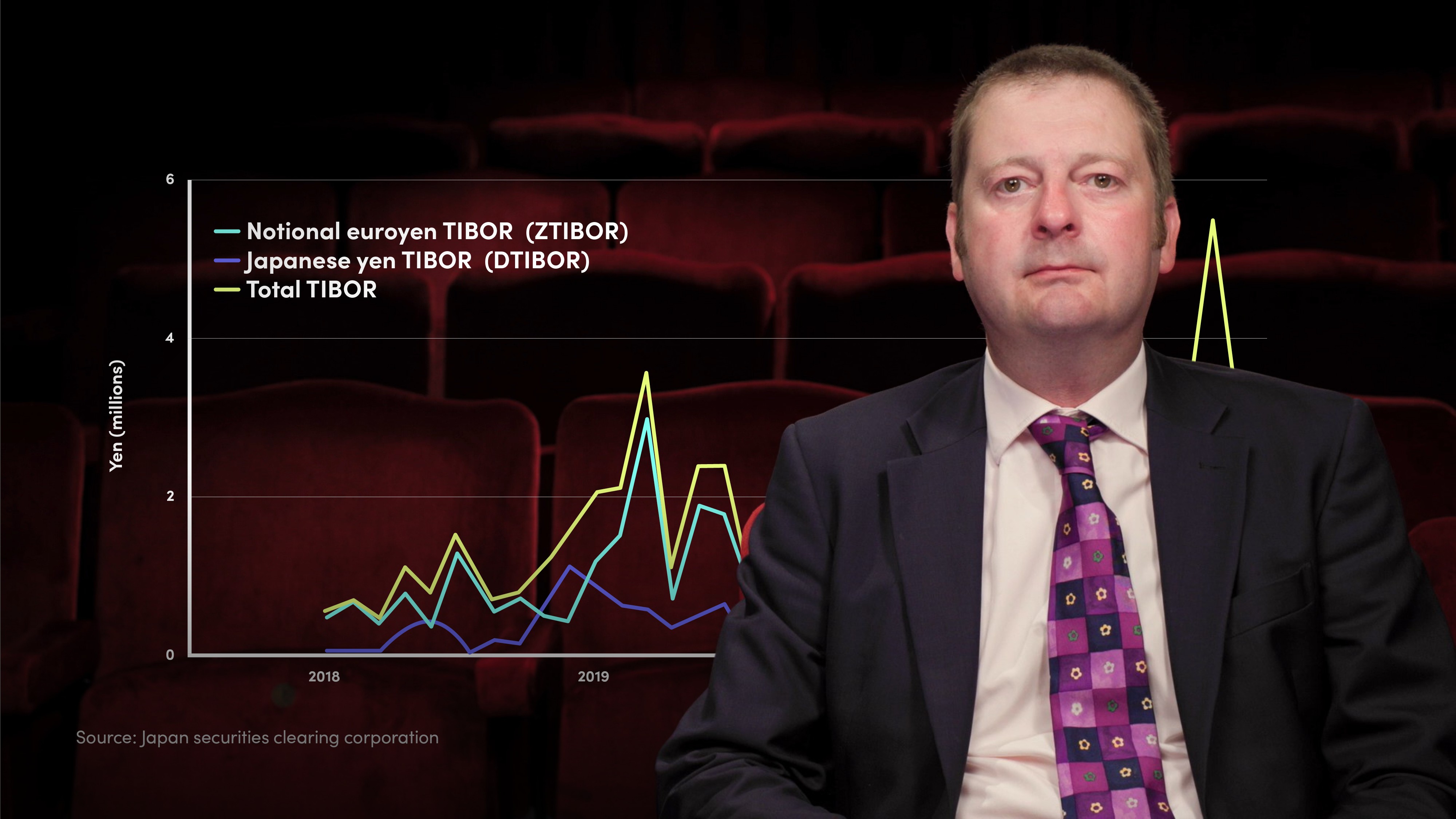
IBOR Transition Update and Credit Sensitive Rates (Aug 21)

John Ewan
20 years: Interest rate benchmarks
Many critical deadlines for the LIBOR transition fall at the end of 2021. However, there are still a large number of unknown factors. In this video, John will guide you through these unresolved issues and then explore the status of the IBOR transition and benchmark reform project globally.
Many critical deadlines for the LIBOR transition fall at the end of 2021. However, there are still a large number of unknown factors. In this video, John will guide you through these unresolved issues and then explore the status of the IBOR transition and benchmark reform project globally.
Subscribe to watch
Access this and all of the content on our platform by signing up for a 7-day free trial.

IBOR Transition Update and Credit Sensitive Rates (Aug 21)
12 mins 49 secs
Many critical deadlines for the LIBOR transition fall at the end of 2021. However, there are still a large number of unknown factors. In this video, John will guide you through these unresolved issues and then explore the status of the IBOR transition and benchmark reform project globally.
Key learning objectives:
Identify which LIBOR transition deadlines are coming to a close by 2021
Learn what Credit Sensitive Rates (CSRs) are
Understand how the IBOR transition is coming along across the world
Subscribe to watch
Access this and all of the content on our platform by signing up for a 7-day free trial.
What happens at the end of 2021 and what is still unresolved and unknown?
By the end of 2021, most of the current 35 LIBORs produced every day by ICE Benchmark Administration will cease publishing. Those that continue to be published will be generated using a different ‘synthetic’ methodology, only be available for use in very narrowly defined circumstances. Synthetic LIBORs will only be produced for certain Yen, Sterling and US Dollar rates. The length of their production, permitted use case and the specifics of their methodology and therefore behaviour is still subject to FCA consultation.
Undoubtedly the biggest and most intractable problem around the IBOR transition is tough legacy contracts. There are pathways towards mitigation for huge numbers of financial instruments that reference IBOR rates - but there are some (typically syndicated loans or bonds) that are difficult to transition. These are known as the tough legacy contracts. They might fall into this bracket because the terms require 100% agreement from all investors to agree to language changes, or because some investors are not engaging with the transition efforts by the issuing entity, or the contract language is so outdated, vague, or inappropriate that it is difficult to resolve. There is good news, in that authorities around the world have recognised this as an issue and are thinking about solutions.
What are Credit Sensitive Rates (CSRs)?
These are new rates that meet regulatory requirements that acceptable benchmarks must be constructed from actual transactions, but also meet market desire for rates that include a credit element. These function either as standalone rates or credit spreads to be added to existing RFRs. Until very recently, regulators had been grudgingly accepting of market participants using these rates.
In the UK, the stance has hardened. Initially they could be used if the firm’s deemed it appropriate. However, the position of the Financial Conduct Authority (FCA) is that any use of these rates must be explicitly discussed and cleared with them. It is unknown what this will mean in practice.
How is the IBOR transition coming along in selected markets?
Hong Kong
The Hong Kong Monetary Authority (HKMA) has issued a supervisory circular requiring banks to cease issuing new LIBOR-linked contracts by the end of 2021. The local IBOR is known as HIBOR and has been subject to a number of reforms over the last few years. The intention is for HIBOR to co-exist with the local RFR, the Hong Kong Overnight Index Average or HONIA. Firms will be permitted to use either.
Switzerland
There is guidance from the Swiss Financial Market Supervisory Authority (FINMA) to use alternative reference rates for the five LIBOR currencies for new contracts after June 2021 and that firms should be entirely operationally ready to use the recommended RFRs - such as the Swiss Average Rate Overnight (SARON). Whilst notionally guidance, this may safely be safely thought of as regulation.
Japan
The Japan Financial Services Agency published a statement in June 2021 in line with those terms to the existing and widely used LIBOR equivalent, TIBOR, and have ensured that it is appropriate for use as a reference rate for the foreseeable future. There are currently two TIBOR series published - one for local Yen, and one for Euroyen (Yen held or traded offshore). These are likely to be integrated into one series of data.
Europe (excluding Switzerland)
All major European authorities jointly published a public statement that echoes the Swiss position. This notice explicitly states that from the Swiss and Hong Kong Authorities, supervised firms should cease using LIBOR at the end of 2021.
There is a local RFR in Japan, the Tokyo Overnight Average Rate (TONAR) but its adoption is not rapid as authorities believe that the firms should proceed. There is an RFR in Europe known as the Euro Short Term Rate (€STR), but this has not been widely adopted. The European authorities have satisfied themselves that after a series of reforms, EURIBOR continues to be a representative benchmark that is appropriate for use in the medium to long term.
Singapore
The Monetary Authority of Singapore (MAS) issued a supervisory circular requiring regulated financial institutions in Singapore to cease issuing new US dollar LIBOR-linked contracts by the end of 2021, and non-USD LIBOR-linked contracts which mature after end 2021 by Q3 2021. The local Singapore dollar IBOR (SIBOR) will be discontinued, as will the fairly widely used Swap offer Rate (SOFR). The local RFR is the Singapore Overnight Rate Average (SORA). The owners of these rates in Singapore have stated that they expect transition from SORA to SOR (and the cessation of SOR) by end 2022, and the cessation of SIBOR at the end 2024 or thereabouts, allowing space to manoeuvre.
Australia
In line with global consensus, the Australian Securities and Investment Commission and the Reserve Bank of Australia have strongly advised Australian institutions to adhere to the ISDA Fallbacks Protocol. They expect institutions to work towards meeting the timeline for the LIBOR transition set out in the global transition roadmap, ceasing the use of LIBOR in new contracts beyond the end of 2021. There is an RFR in Australia called the RBA’s Interbank Overnight Rate (AONIA) but the market is still heavily using the local IBOR equivalent known as Bank Bill Swap Rates (BBSW) which is unusual. BBSW is intended to be available for use for the foreseeable future.
Canada
They are also pursuing a multi-rate environment. An updated version of the Canadian Overnight Repo Rate Average (CORRA) has been identified by the Bank of Canada's Canadian Alternative Reference Rate Working Group as the preferred RFR for Canada. The local LIBOR equivalent (CDOR) ceased publication of 6 and 12 month tenors on Friday 14 May 2021, but publication of the more widely used 1-month, 2-month and 3-month tenors will continue for the foreseeable future.
China
Major lending institutions were asked to proactively advance the transition for US dollars loans from USD LIBOR to SOFR. To support the transition, the People’s Bank of China has issued a series of templates, including: recommended fallback language for LIBOR-based loans, provisions to transfer existing loans to SOFR and a template for new SOFR-based loans. The templates largely align to the recommendations of the US Alternative Reference Rates Committee, on fallback language and RFR conventions for bilateral loans.
Subscribe to watch
Access this and all of the content on our platform by signing up for a 7-day free trial.

John Ewan
There are no available videos from "John Ewan"






















